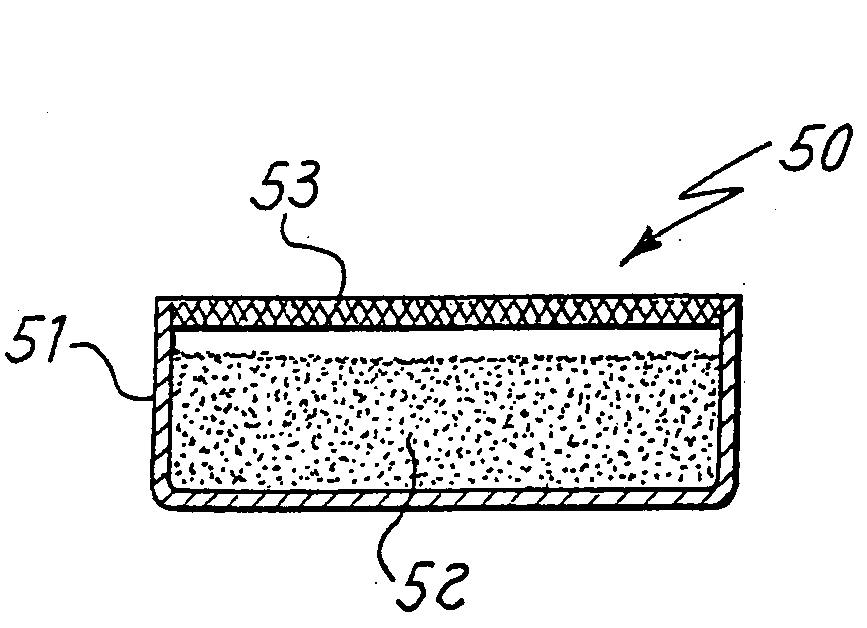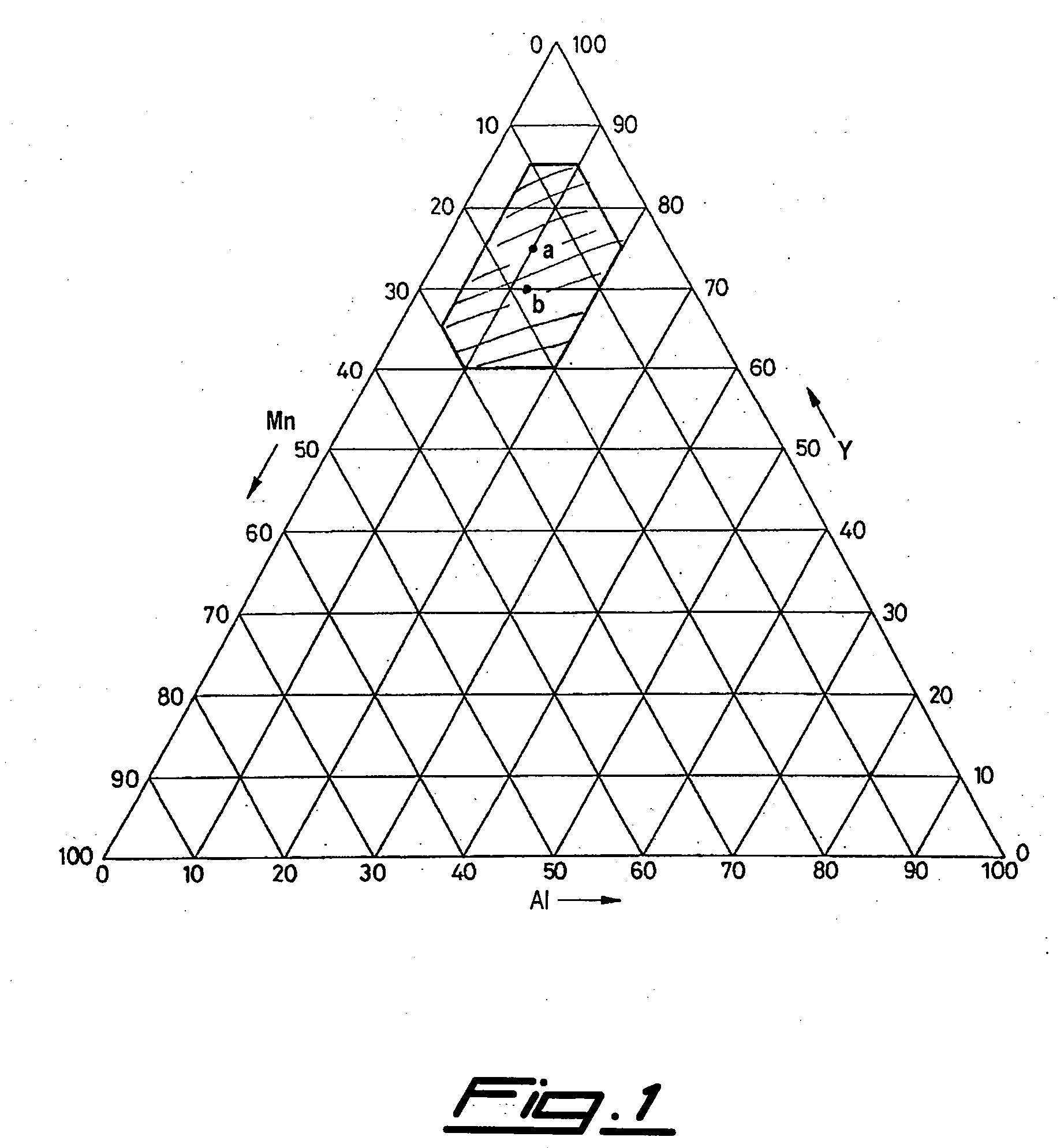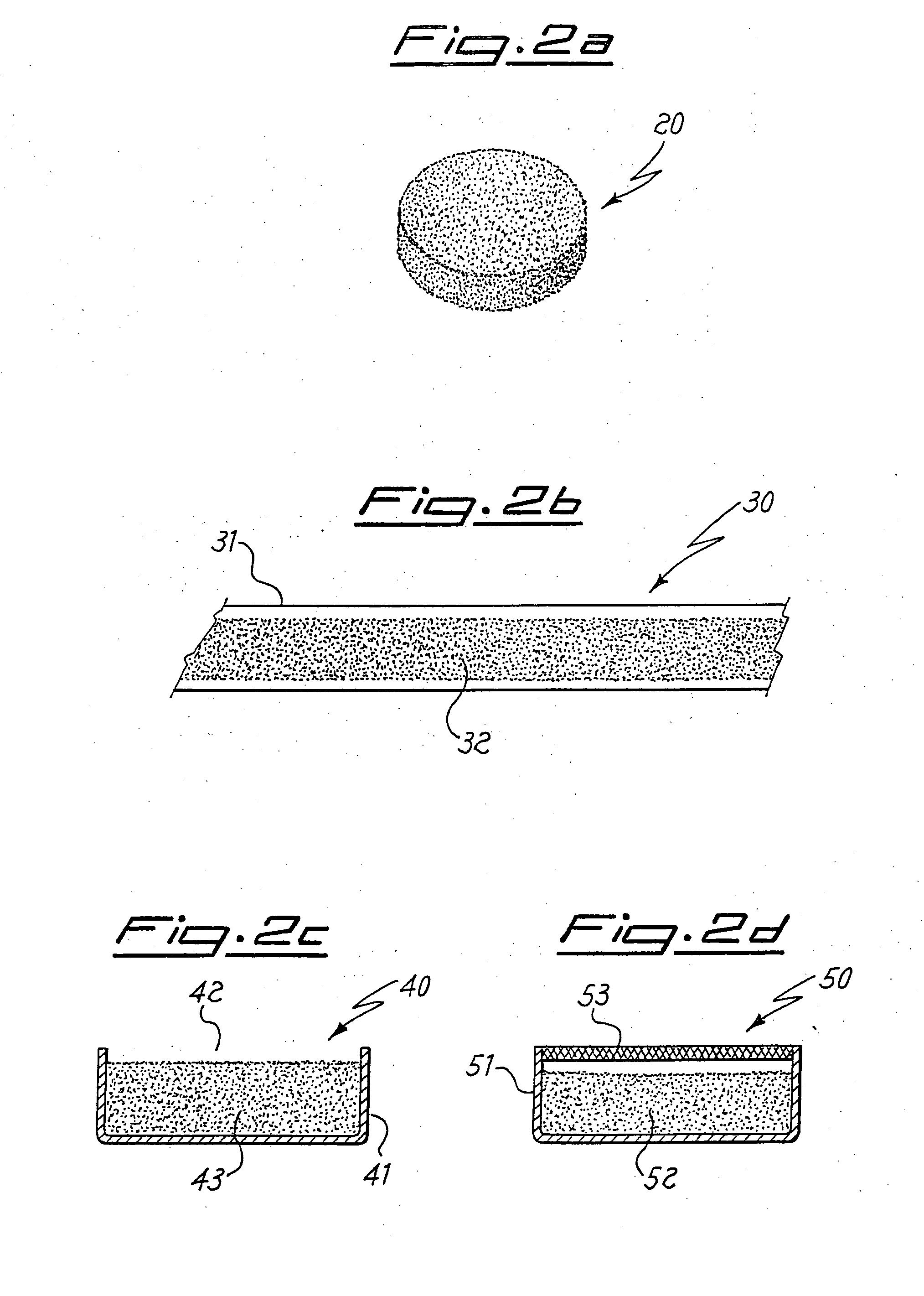Non-evaporable getter alloys based on yttrium for hydrogen sorption
a technology of yttrium and yttrium, which is applied in the field of yttrium-based non-evaporable getter alloys for hydrogen sorption, can solve the problems of undesired gas residues in the final device, problems in the correct operation of the device, and the drawback of a relatively high hydrogen equilibrium pressure of the material, and achieve good hydrogen sorption properties
- Summary
- Abstract
- Description
- Claims
- Application Information
AI Technical Summary
Benefits of technology
Problems solved by technology
Method used
Image
Examples
example 1
[0025]This example describes the preparation of an alloy of the invention. An alloy of composition Y 75%-Mn 15%-Al 10%, corresponding to point a in the ternary diagram of FIG. 1, is produced starting from powders of the component elements weighed in the desired ratio. The powders are mixed and poured into a water cooled copper crucible of an arc furnace under an atmosphere of 3×104 Pa of argon (so-called “cold-earth” technique). The temperature reached by the mixture during melting is of about 2000° C. and is maintained for about 5 minutes. The melt is then allowed to cool down to room temperature, obtaining an ingot of the alloy. Since the preparation takes place under conditions of high thermal gradient, in order to enhance the alloy homogeneity, the melting is repeated four times. The ingot obtained by cooling after the fourth melting is milled and the resulting powder is finally sieved, retrieving the fraction with particle size comprised between 40 and 105 μm.
[0026]The thus obt...
example 2
[0027]A hydrogen sorption test is carried out on a pill of sample 1 and on a pill having a weight of 120 mg obtained by compressing powders of pure yttrium. The pills are activated at 500° C. for 30 minutes. The sorption tests are carried out according to the procedure described in the ASTM F 798-82 standard with a test temperature of 400° C. and a hydrogen pressure of 4×10−3 Pa. These tests are said to take place under “dynamic conditions” because the test chamber is fed with a variable flow of hydrogen, regulated by means of a feed-back system, in order to have a constant pressure of H2 over the pill during the test. The results of these tests are graphically represented in FIG. 3 as sorption speed, S, measured as cubic centimeters of hydrogen sorbed per second and per gram of alloy (cc / s×g), as a function of the quantity of sorbed hydrogen, Q, measured as cubic centimeters of gas multiplied by the sorption pressure in hectoPascal and normalized per gram of sample (cc×hPa / g). Curv...
example 3
[0028]In this example are measured the hydrogen equilibrium pressure properties of a sample of an alloy of the invention.
[0029]The measurement system is formed as a glass bulb, connected to a pumping apparatus through a liquid nitrogen trap which helps to keep a low background pressure during the test. The sample is heated from the outside of the bulb by radio-frequencies by means of an induction coil. The system is evacuated until a residual pressure of 1×10−4 Pa is reached. Under pumping, the sample is activated by heating with radio-frequency at 700° C. for an hour. At the end of the activation process, the sample is brought to a temperature of 600° C. and the bulb is isolated from the pumping apparatus. A measured quantity of hydrogen is introduced into the bulb and the pressure variations are measured by means of a capacitance manometer. The pressure value at which the system stabilizes provides the equilibrium pressure under those conditions. Such a procedure is repeated sever...
PUM
| Property | Measurement | Unit |
|---|---|---|
| Fraction | aaaaa | aaaaa |
| Fraction | aaaaa | aaaaa |
| Fraction | aaaaa | aaaaa |
Abstract
Description
Claims
Application Information
 Login to View More
Login to View More - R&D
- Intellectual Property
- Life Sciences
- Materials
- Tech Scout
- Unparalleled Data Quality
- Higher Quality Content
- 60% Fewer Hallucinations
Browse by: Latest US Patents, China's latest patents, Technical Efficacy Thesaurus, Application Domain, Technology Topic, Popular Technical Reports.
© 2025 PatSnap. All rights reserved.Legal|Privacy policy|Modern Slavery Act Transparency Statement|Sitemap|About US| Contact US: help@patsnap.com



